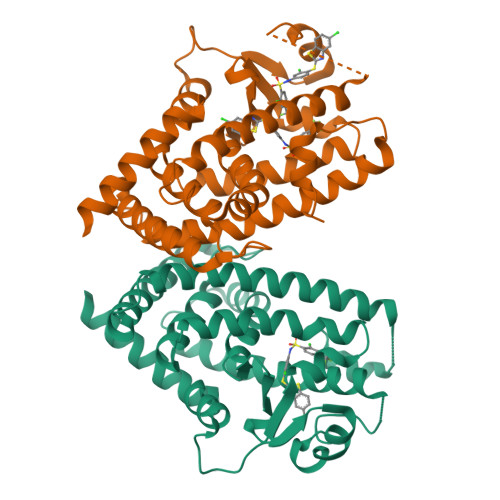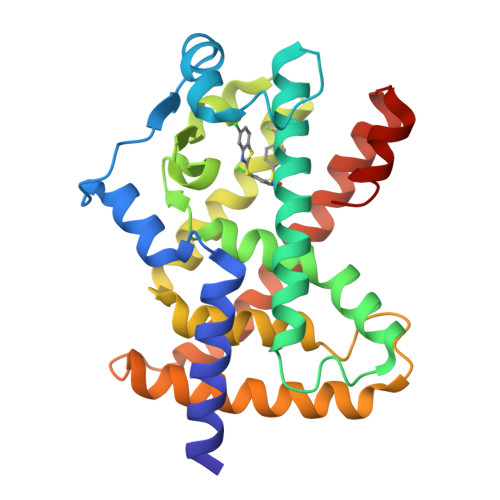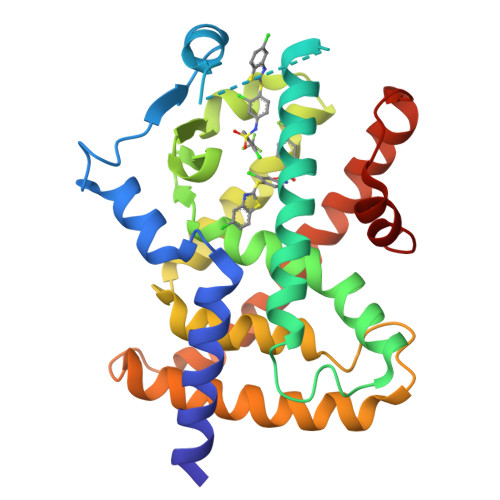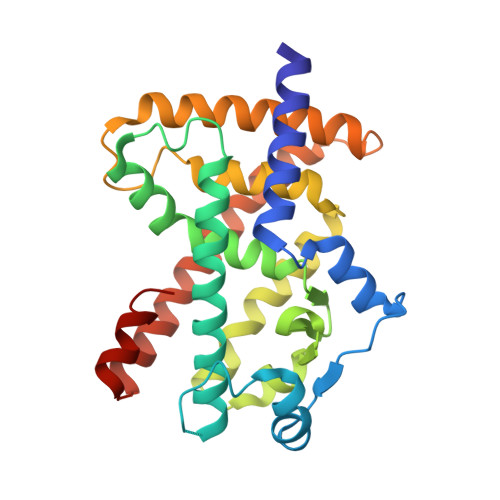T2384, a novel antidiabetic agent with unique peroxisome proliferator-activated receptor gamma binding properties
Li, Y., Wang, Z., Furukawa, N., Escaron, P., Weiszmann, J., Lee, G., Lindstrom, M., Liu, J., Liu, X., Xu, H., Plotnikova, O., Prasad, V., Walker, N., Learned, R.M., Chen, J.-L.(2008) J Biological Chem 283: 9168-9176
- PubMed: 18263587
- DOI: https://doi.org/10.1074/jbc.M800104200
- Primary Citation of Related Structures:
3K8S - PubMed Abstract:
The nuclear hormone receptor peroxisome proliferator-activated receptor gamma (PPARgamma) plays central roles in adipogenesis and glucose homeostasis and is the molecular target for the thiazolidinedione (TZD) class of antidiabetic drugs. Activation of PPARgamma by TZDs improves insulin sensitivity; however, this is accompanied by the induction of several undesirable side effects. We have identified a novel synthetic PPARgamma ligand, T2384, to explore the biological activities associated with occupying different regions of the receptor ligand-binding pocket. X-ray crystallography studies revealed that T2384 can adopt two distinct binding modes, which we have termed "U" and "S", interacting with the ligand-binding pocket of PPARgamma primarily via hydrophobic contacts that are distinct from full agonists. The different binding modes occupied by T2384 induced distinct patterns of coregulatory protein interaction with PPARgamma in vitro and displayed unique receptor function in cell-based activity assays. We speculate that these unique biochemical and cellular activities may be responsible for the novel in vivo profile observed in animals treated systemically with T2384. When administered to diabetic KKAy mice, T2384 rapidly improved insulin sensitivity in the absence of weight gain, hemodilution, and anemia characteristics of treatment with rosiglitazone (a TZD). Moreover, upon coadministration with rosiglitazone, T2384 was able to antagonize the side effects induced by rosiglitazone treatment alone while retaining robust effects on glucose disposal. These results are consistent with the hypothesis that interactions between ligands and specific regions of the receptor ligand-binding pocket might selectively trigger a subset of receptor-mediated biological responses leading to the improvement of insulin sensitivity, without eliciting less desirable responses associated with full activation of the receptor. We suggest that T2384 may represent a prototype for a novel class of PPARgamma ligand and, furthermore, that molecules sharing some of these properties would be useful for treatment of type 2 diabetes.
Organizational Affiliation:
Amgen Inc., South San Francisco, CA 94080, USA. yangl@amgen.com





















